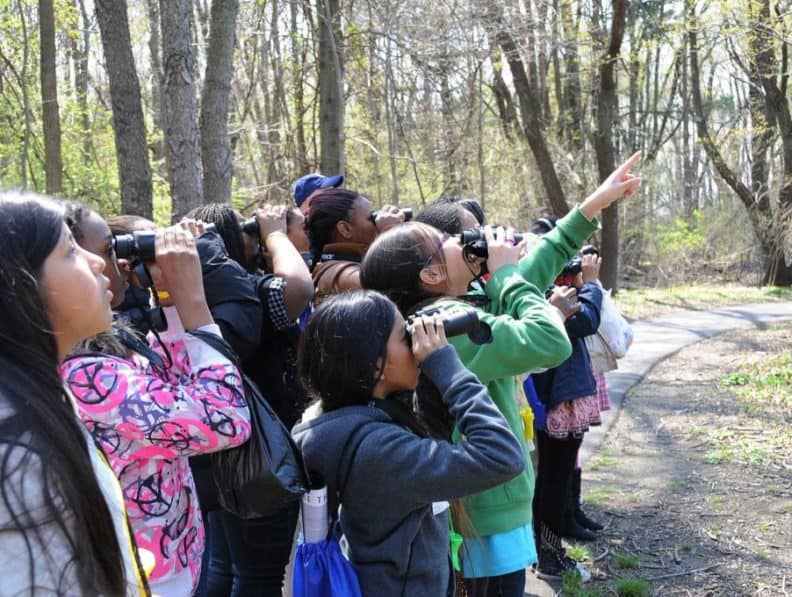
Animals in the City: Encouraging Children to Get to Know Their Nonhuman Neighbors
By Sarah Clement, graduate student in the Institute’s 16th cohort.
Transference is a concept that often comes up in discussion among environmental educators. How do we, as educators, help our students make connections between their experiences with us in “nature” and their daily lives? We teach out students about the North Cascades ecosystem, but we want them to make connections between what they learn about the mountains to what they already know about their homes. We want them to understand that an ecosystem functions in the North Cascades in the same way that ecosystems in and around their home communities function. Above all, we want our students to understand that even though they traveled hours to reach Mountain School, they don’t have to do so to find the importance and wonder of natural spaces.
As human population growth continues to explode around the world, more people are migrating to urban areas. Over 80% of the population of the United States already lives in urban areas, and the influx of people to cities continues to grow. Washington State is no exception to these trends. As of 2016, our population has grown to well over seven million people. Most of the increase comes from people migrating from out of state to large urban areas along the Interstate 5 corridor in the western half of the state. With this population growth comes increased urbanization: more land is being converted to urban infrastructure. Wild habitats are being fragmented or drastically altered in the process.
Despite this increasing destruction and fragmentation, nature has a funny way of inserting itself in even the most unlikely of urban places: a bird will nest on top of a skyscraper, or a plant will wiggle through a crack in a concrete surface. Other spots within an urban environment are exploding with life: the neighborhood park, or the waterways that flow through many cities are brimming with biodiversity. Since so many people live in urban areas these days, and the vast expanses of natural spaces are less accessible to more and more of our population, it is essential to connect people to the environments that they do have access to. One of the most important demographics to educate is children – if kids can understand from an early age that nature isn’t just something they have to drive to, everything improves.
One way to connect children to their local environments is to encourage them to get to know the wildlife who make their homes in urban areas. Many of these animals – raccoons, starlings, moles, to name a few – are considered pests by many people, because these animals create nuisances for humans to deal with. Raccoons tip trash cans. Starlings outcompete native birds. Moles create ugly molehills on otherwise pristine lawns. Many people see these animals only in terms of how the animals create problems for them, and they don’t see, or choose to ignore, the idea that these animals are trying to live, just like us, and they’re using the resources available to them to do so. Raccoons are opportunists; they eat food that is easily available to them. Starlings have beautiful songs. Moles create molehills in pristine lawns because the soil beneath lawns is ideal for their tunnels.
Kids can get to know these creatures in many ways. They can start by looking for animal signs outside their homes or school playgrounds: wildlife will often leave tracks to find in damp soil, for instance. Kids can also learn the plants that are native to their homes and create native plant gardens that attract wildlife for food and shelter purposes. Guidelines for creating a wildlife-friendly garden can be found on the National Wildlife Federation’s website.
As environmental educators, one of our main tasks is to teach our students that what we teach them in remote, wild settings can also be applied in their everyday lives. The cycles that occur in the wilderness occur just outside their bedroom windows, too. The animals that thrive in the woods also thrive in their neighborhoods. Nature is everywhere, and we only need to look outside to find it.
Title image of children birding in their local park. Courtesy of Creative Commons

